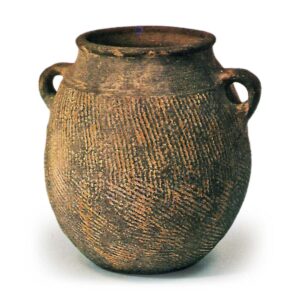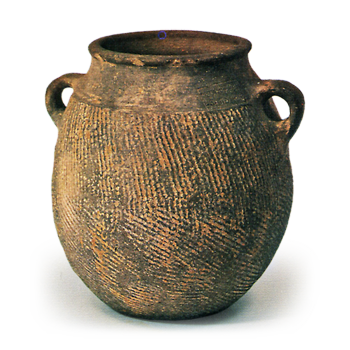
Ancient Chinese earthenware with a rope-like pattern on the surface. Except for high-quality black earthenware, most ancient Chinese earthenware from the Shaolongshan to the Han Dynasty was made by the winding method, in which the walls of the vessel were struck from the inside and outside with a board. A rope is wrapped around the plate to prevent the clay from sticking to it. The pattern of the rope is parallel to the whole surface and looks like a woven mat, hence the name “NAWA-ORETSU”. The high-quality earthenware of the Yanshao period, such as painted pottery, was probably made by further polishing and smoothing the surface of this rope pattern. Jomon pottery was still scarce in the Yangshao period, but gradually increased in the Longshan period and flourished in the Shang and Zhou periods. In the Yanshan and Longshan periods, it was found on coarse wares, and from the Shang to the Han dynasty, it was especially common on gray wares, and sometimes on red wares. This pattern is called jomon in China, but there is a distinction between the two, as it is made by striking the rope in parallel, unlike the Japanese jomon in which the rope is rotated to create the pattern. This pattern is also common on ceramic and haniwa pottery from the Korean Peninsula.



